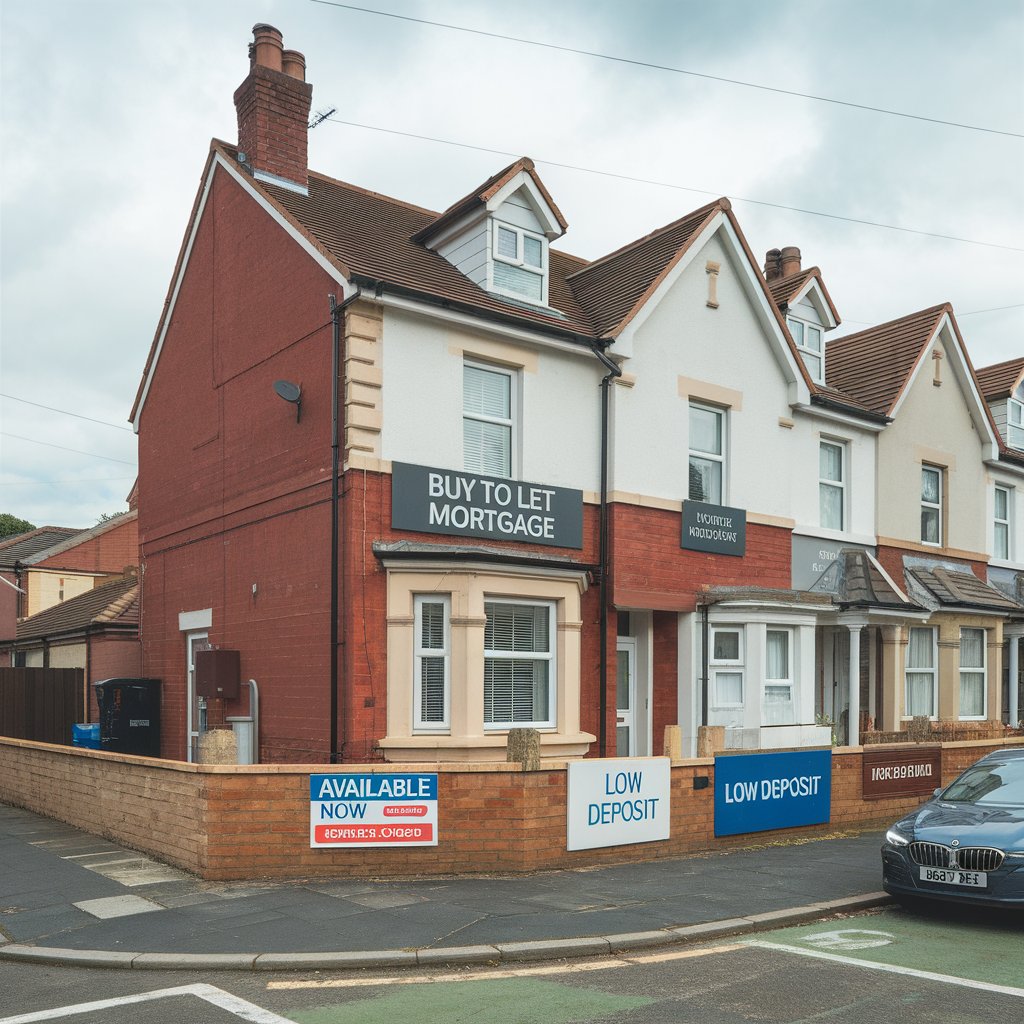A mortgage is one of the biggest financial commitments you can make, and the interest rate you secure will shape the overall cost of your property. Many people jump into a mortgage without truly understanding how rates work or why they move. Getting the basics right can help you avoid surprises later. In this blog, we will explore what goes into a mortgage interest rate, how loan-to-value matters, and why the base rate is so important. We will also look at current mortgage rates in the UK, plus tips to find the best mortgage deal for your needs.
Current UK Mortgage Rates: Market Overview
Mortgage rates in the UK have shifted a lot over the past few years, and keeping up with these trends is vital if you are aiming for the best mortgage rate. When people ask, “What are current mortgage interest rates?” they find that the answer can vary by lender, property value, employment history, and the loan product itself. Analysing where rates stand now and why they are changing will help you see if this is the right moment to secure a mortgage or remortgage.
Some borrowers are interested in short-term deals because the average mortgage interest rate has gone up from past lows. Others prefer longer fixes for certainty and a chance to lock in a fair cost before any further base rate increases. Many also wonder if a slight dip in the housing market might encourage lenders to offer better pricing. Yet rates remain dependent on multiple factors. Inflation, world events, and domestic policy can all influence whether a mortgage interest rate will get cheaper or more expensive. Despite the recent ups and downs, many homeowners still manage to get good quotes, especially if they know how to compare mortgage rates effectively.
The Bank of England base rate plays a huge role here. When the base rate rises, lenders often raise their standard variable rates and tracker mortgages. That leads to an uptick in monthly mortgage payments for those not on a fixed contract. If the base rate drops, mortgages might get a bit cheaper, but lenders also look at things like credit risk and the broader economic picture. Even when base rate decisions move in your favour, the savings on a mortgage rate are not always automatic, especially if you picked a longer fixed-rate mortgage or an arrangement with early repayment fees.
Average costs for buyers wanting a two-year fix at 75 percent loan to value might land in a certain range, while first-time buyers with just 5 or 10 percent deposit may see higher rates. Meanwhile, existing homeowners could get lower offers if they have built enough equity to move into a better loan to value bracket. To get a clearer sense of current mortgage interest rates, many people track news sources or check lender websites. Others seek advice from brokers who understand day-to-day changes in UK mortgage rates. Either way, a bit of prep work can help you pinpoint deals that fit your goals.
Below is a simple table that outlines some recent trends in current UK mortgage rates. These are estimates only, and actual offers can vary based on your credit report, property location, and more:
| Loan to Value Range | Approximate Fixed-Rate Mortgage | Tracker or Variable Range |
|---|---|---|
| 60 to 75 Percent | 4.0% to 4.5% | 4.2% to 4.7% |
| 80 to 85 Percent | 4.5% to 5.0% | 4.7% to 5.1% |
| 90 to 95 Percent | 5.1% to 5.7% | 5.3% to 6.0% |
This table highlights how bigger deposits usually mean better terms. If you keep track of these numbers, you stand a higher chance of responding quickly when the market swings in your favour. In the end, the right time to secure a mortgage is whenever you find a product you can handle comfortably, both now and in the future.
Spotlight on the Average Mortgage Interest Rate
The average interest rate has climbed from historically low points, but it remains somewhat moderate compared to figures from decades ago. This is important if you are concerned about monthly mortgage payments. The level of this average partly results from national economic confidence, mortgage availability, and global financial events. Staying aware of average interest rates can help you map out your monthly budget and ensure you are not overspending on a mortgage that could become unmanageable if rates go higher. People often ask if they should wait until rates dip again, but it is hard to predict the perfect moment, so focusing on personal readiness is in many cases more practical.

What Are Current Mortgage Interest Rates: Key Influences
Some of the main drivers behind current mortgage rates in the UK include inflation trends and the Bank of England stance on monetary policy. Lenders also look at housing market activity. If house prices slow or more properties flood the market, mortgage offers might adjust accordingly. Global events like trade conflicts or shifts in oil prices can spark changes that trickle down into the mortgage sector too. Because of these moving parts, it is wise to review your options regularly. Even if you locked into a deal two years ago, keep an eye on new products that might save you money if your financial position has improved or if lenders become more competitive.
How Loan to Value Affects Your Mortgage Interest Rate
Loan to value is the ratio of how much you borrow against how much the home is worth. The lower you can push your loan to value, the better chance you have at securing a mortgage interest rate that is hard to beat. Lenders see a lower loan to value as less risky, and that can spell big savings on interest costs over time. Yet many people do not realise that even a small bump in deposit size or property equity could move them into a cheaper bracket. This section explores how LTV works and the ways you can tweak it to find the best mortgage rate for your situation.
Lower LTV Means Higher Savings
When lenders size up your application, they look at how much money you want compared to your home’s valuation. For example, if that valuation is £200,000, and you borrow £150,000, your loan to value is 75 percent. This might qualify you for a fairly attractive product, possibly around the mid or lower end of typical mortgage rates in the UK. If you only put down a small deposit and borrow £190,000, your LTV jumps to 95 percent. Lenders often raise the rate because they are taking a bigger risk. Over many years, that difference in rates can add up substantially. When you are planning your budget, think about what an extra 0.5 percent or 1 percent might cost you each month. Use that insight to figure out if increasing your deposit is worth it. Sometimes, saving a bit more so that you land below a threshold like 90 percent LTV can put you closer to a better deal.
Ways to Improve Your Loan to Value
You can trim your loan to value in different ways. One strategy is to wait until you can save a bigger deposit before buying your property. Another is to look at properties that cost less so you can bring the ratio down. Even small changes of a few thousand pounds can push you from a higher LTV bracket into a more favourable one. Also, for those who already have a mortgage, overpaying when possible can drive down your LTV faster. This helps you remortgage later at a lower rate. Some homeowners also invest in upgrades that raise the property’s market value. If your property valuation goes up faster than your mortgage balance, you get an even better ratio. Before making any move, check with your lender for fees or conditions, but most times a stronger LTV leads you to the best mortgage rate.
Fixed-Rate Mortgage vs Variable: Understanding the Options
Picking between a fixed-rate mortgage and a variable-rate deal can feel tricky, but it all boils down to personal comfort and forecasts about future rates. A fixed rate stays the same for a set period, so your monthly mortgage payments remain predictable. Variable products can start cheaper, but they shift alongside wider market changes. This section compares these two approaches, explains how to weigh their pros and cons, and shows why timing matters if you want to find the best mortgage.
Why Choose a Fixed-Rate Mortgage
A fixed-rate mortgage sets your interest cost for a specific term, which might be two, five, or even ten years. The main advantage is stability. You will know exactly how much you owe each month, making it easier to plan your household budget. This approach is helpful if you worry about potential hikes in the Bank of England base rate. The downside is that you might miss out on a drop in current mortgage rates. Some borrowers also find that fixed deals come with early repayment charges if they want to exit or switch before the term ends. Despite that, many homebuyers prefer the security of fixed payments, especially if they anticipate that interest rates might climb soon.
When Variable Rates May Be Appealing
Variable rates include tracker mortgages and discounts that follow a lender’s standard rate. If overall rates drop, your monthly payment dips too, which can save you money without needing a remortgage. But if rates move higher, your payments will also go up. This can be risky if you have a tight budget or little savings. Still, some homeowners are fine with that uncertainty because they value the chance to benefit if the base rate goes down. This can be a good fit for people who keep an eye on market trends or might pay off their loan faster. Making a choice between fixed and variable usually starts by looking at how long you intend to stay in the property, how flexible you need your mortgage to be, and how you feel about possible interest rate swings. If you do not want any surprises, a fixed-rate mortgage might be more comfortable.
Finding the Best Mortgage Rates: Steps to Secure the Best Mortgage Deal
Many borrowers look at a mortgage’s headline rate and decide quickly, but that can be a mistake. To find the best mortgage deal, you should compare mortgage rates across multiple lenders, factor in fees, and consider your credit profile. Sometimes rates appear lower because of extra charges tacked on. This section outlines some ways to compare deals and locate gems in the busy mortgage market.
Making the Most of Comparison Tools
Online comparison sites can be a helpful place to start when you want to see mortgage rates in the UK. You can plug in details like property value and deposit size, and the tool will produce some quick examples. These tools are good for broad research, but they might not show the entire market. Also, they do not always reflect special discounts that come from local building societies or broker-exclusive deals. Double-check annual percentage rates of charge (APRC), which factor in both interest and fees. You might notice that one mortgage with a very low starting rate actually ends up costing more when arrangement fees or valuations are added.
Working With a Broker and Hidden Costs
Mortgage brokers can give you access to deals you might never see on your own. They know the ins and outs of lending criteria, and some have direct lines to underwriters. Though a broker might charge a fee, the guidance can save time and hassle. They will help you figure out the total cost, which includes more than just the monthly interest. You might have product fees, booking fees, or legal costs to plan for, and these can be hidden until late in the process. The best mortgage rate is not just about the headline percentage: look at how long the rate lasts, whether early repayment penalties apply, and whether you can make overpayments without fees. A thorough approach keeps you from locking into an arrangement that seems cheap but ends up costing more in the long run.
Special Mortgage Rate Considerations: Second Home
Not everyone seeks a mortgage for a primary residence. Some people want a second property for personal use, while others want an investment that will generate rent. In some cases, homeowners may also need to understand how to sell a house with a mortgage, as this can affect affordability checks and future borrowing options. In these cases, second home mortgage rates and buy-to-let mortgage rates are typically higher than standard residential deals. Lenders factor in additional risks and stricter affordability checks. In this section, we will look at the differences you might face and how to prepare if you decide to buy another home.

Second Home and Buy-to-Let Considerations
Second home mortgages often come with higher interest rates because lenders view them as riskier investments. You typically need a larger deposit, often 25% or more, and lenders will scrutinise your income more carefully. Buy-to-let mortgages have their own set of rules, with rates usually higher than residential mortgages and rental income calculations factored into affordability assessments.
Building societies and specialist lenders may offer competitive rates for these types of mortgages, so it’s worth exploring all options. The FCA regulations around buy-to-let lending have also tightened in recent years, making professional advice even more valuable when navigating these markets.
Conclusion
Understanding how interest rates work for home mortgages is crucial for making informed financial decisions. From the impact of loan-to-value ratios to the choice between fixed and variable rates, each factor plays a role in determining your overall mortgage costs.
The UK mortgage market offers various options, from high street banks to building societies, each with different rate structures and criteria. By staying informed about current market conditions, understanding how the Bank of England base rate affects your options, and working with experienced mortgage advisers, you can position yourself to secure the best possible deal for your circumstances.
Remember that the lowest headline rate isn’t always the best deal when fees and terms are considered. Take time to compare the total cost of different mortgage products and consider how they fit with your long-term financial plans.




